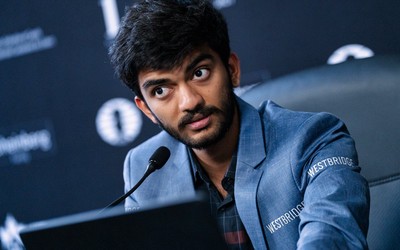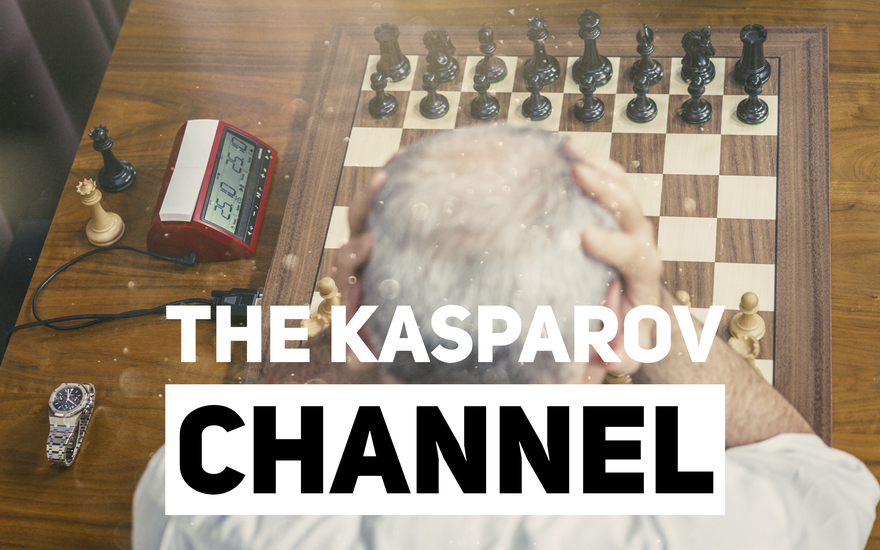
The Kasparov Channel: 2017 SLCC Rapid Coverage
Does he still have the magic?Welcome to the lichess coverage of the 2017 Saint Louis Rapid & Blitz. Nowadays there is a channel for everything: golf, cooking, news, infomercials, comedy, music - so why not Kasparov? There is obviously much more going on in this tournament than just Kasparov, but I decided to focus on one subject rather than covering everything with a cursory touch. If you're looking for a more traditional tournament report, there are plenty of places to find one. So with that, let's turn on...The Kasparov Channel
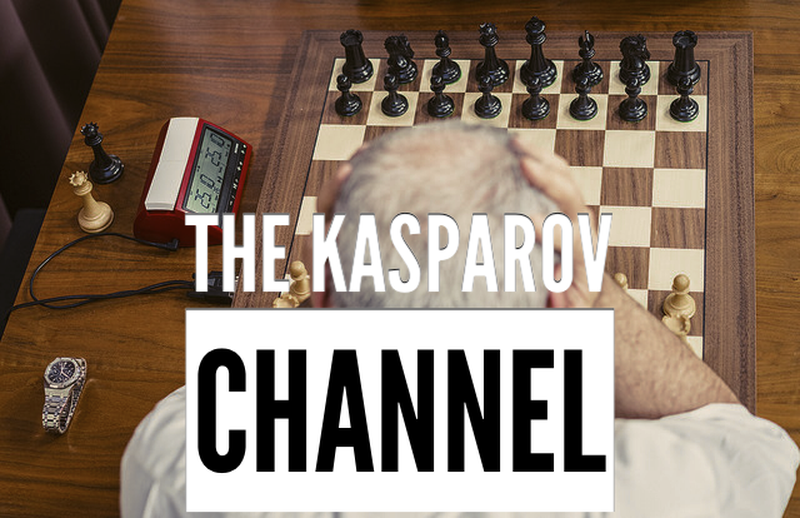
All phots courtesy of The Grand Chess Tour and Lennart Ootes
Kasparov, are you retired or not?
Garry Kasparov has returned to competitive chess for the first time in 12 years. This decision has generated enormous interest in the 2017 Grand Chess Tour Saint Louis Rapid & Blitz Tournament. Kasparov has also been very clear that his involvement with this tournament does not mean he is coming out of retirement.
The problem is, if your job was playing competitive chess, then returning to competitive play is precisely what coming out of retirement is.

Garry played in the 2016 "Blitz Showdown," also held at CCSCSL, an exhibition with the USA's top 3 players. Kasparov placed 3rd in that event, and was plagued by exactly the type of blunders you would ascribe to someone who has spent 12 years away from the heat of battle. The "showdown" produced some great results but wasn't taken 100% seriously. In a game against Kasparov, Nakamura essentially gave him a 'take-back,' allowing him to change the piece he wanted to move even after he touched another. Playing in this small, but highly enjoyable event, does not break the seal of Kasparov's retirement. No rating points were exchanged and nothing, except bragging rights, were at stake.
But this time it's different. The games in the Saint Louis Rapid & Blitz have consequences. Players risk rating points, Grand Chess Tour points, and cold hard cash. Yet Kasparov insists he's still retired.
Would you believe someone telling you they are a vegetarian while eating a cheeseburger? Because that's what this feels like.
What is Kasparov's motivation?
To understand why Kasparov is 'returning,' it's important to understand why he left in the first place. Kasparov retired out of frustration with chess organizers - not out of fatigue, boredom, or age. The over-simplified answer is; Kasparov's first World Championship match was extremely controversial and was aborted because of how unexpectedly long the match became. Then when Kasparov lost his World Title 15 years later, it was extremely difficult for him to secure a rematch, which should be a routine gesture. Kasparov said "forget chess, I'm going to go fight for human rights."
Enter Rex Sinquefield. Rex Sinquefield, a St. Louis business mogul decided he wanted to build a chess club, so the Chess Club and Scholastic Center in St. Louis (CCSCSL) opened in 2008. It is hands down the nicest, cleanest, friendliest, and most dignified chess club I've ever set foot it. Think Restoration Hardware decor with chess boards everywhere and pictures of chess legends on the wall. It's seriously amazing, and you should go if you haven't.

In 2013 the CCSCSL hosted the first ever "Sinquefield Cup," a tournament reserved for the strongest players in the world. The 2014 Sinquefield Cup will go down in history as Fabiano Caruana won his first 7 (!!!) games, making it one of the best tournament performances in history. Because of this, and other tournaments like it, the club gained notoriety, and Garry Kasparov started popping in. Sometimes just to help out with commentary for a couple of hours or perhaps attend an opening or closing ceremony. Which brings us to 2016 when he played in the "Blitz Showdown" and 2017 where he returned to competitive play.
I believe the St. Louis Chess Club and the Grand Chess Tour fills the void in Kasparov left by his tumultuous relations with FIDE of the past. I believe Kasparov is honoring chess, the St. Louis Chess Club, and Rex Sinquefield with his presence and participation. Kasparov knows all the hype that follows him, and he is essentially donating it to chess. Kasparov is also literally donating his winnings to charity.
To continue the analogy, Kasparov can say I'm a vegetarian while eating a cheeseburger, and it makes sense. What a genius!
Kasparov's Performance
Chess is a brutally unforgiving game where entire games of brilliance can be ruined by a single mistake. Making solid moves consistently is more important than flashes of genius. And it was Kasparov's lack of consistency that ultimately undermined his success in rapid portion of this tournament.
Here is Kasparov's first game against Karjakin. Kasparov had white, and reached the following position after black's 17th move.
Kasparov plays the conservative e3 while the aggressive e4 was necessary to maintain innative.
In his 4th game against Levon Aronian, Kasparov took advantage of poor opening play by his opponent and was able to secure a winning knight and pawn endgame. But Aronian secured the draw with a clever pawn sacrifice, drawing Kasparov's king to a square where it fell prey to a knight fork.
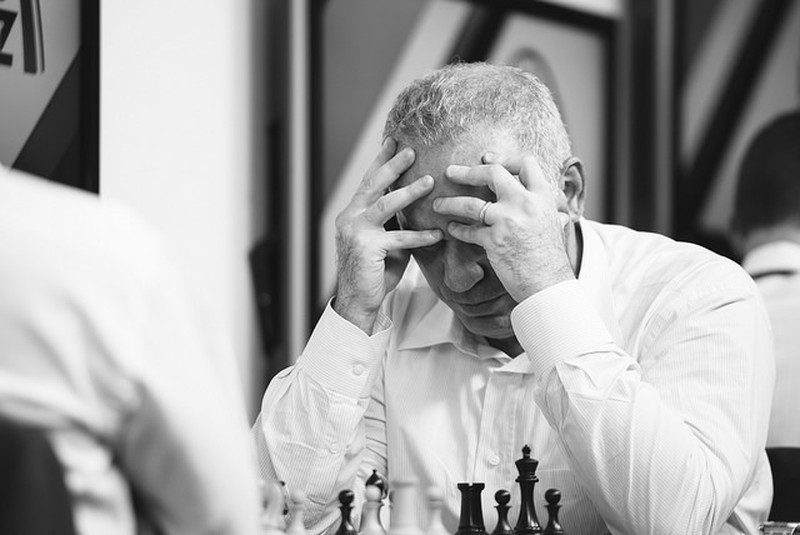
Kasparov's second difficulty was time management, consistently spending most of his time in the opening, leaving him to rely only on instinct in the middle and endgame.
In some games, Kasparov tried to slowly outmaneuver his opponents, where in others he showed traces of his dynamism relying on superior calculation.
On the third day of rapid play Kasparov combined the two styles: dynamic openings followed by "Karpov-ian" positional strangleholds. Unfortunately the first game of the day was pure heartbreak for Kasparov fans. Kasparov did everything right out of the opening and did it quickly, in fact it was the only game in the rapid portion where Kasparov was up on the clock.
Kasparov's 19th move offers a queen trade even though he is down a pawn, a counterintuitive decision. If you are down in material, you need to keep all that material on the board and only trade it off if you get an advantage in doing so. But Kasparov had completely locked Navara's g6 bishop out of the game, and he seized the opportunity to battle when all black's pieces, although on the board, we not at his disposal.
Although Kasaparov could have won the game any number of ways, his most puzzling blunder came on move 37. His King was in check on d2. The correct escape square was c3 which denies the black rook of the c2 square and guarantees the safe passage of white's passed pawn, winning at least a bishop. Instead Kasparov chose e3 and Navara placed his rook behind Kasparov's passed pawn, setting up an epic game ending combination, winning Navara the game.
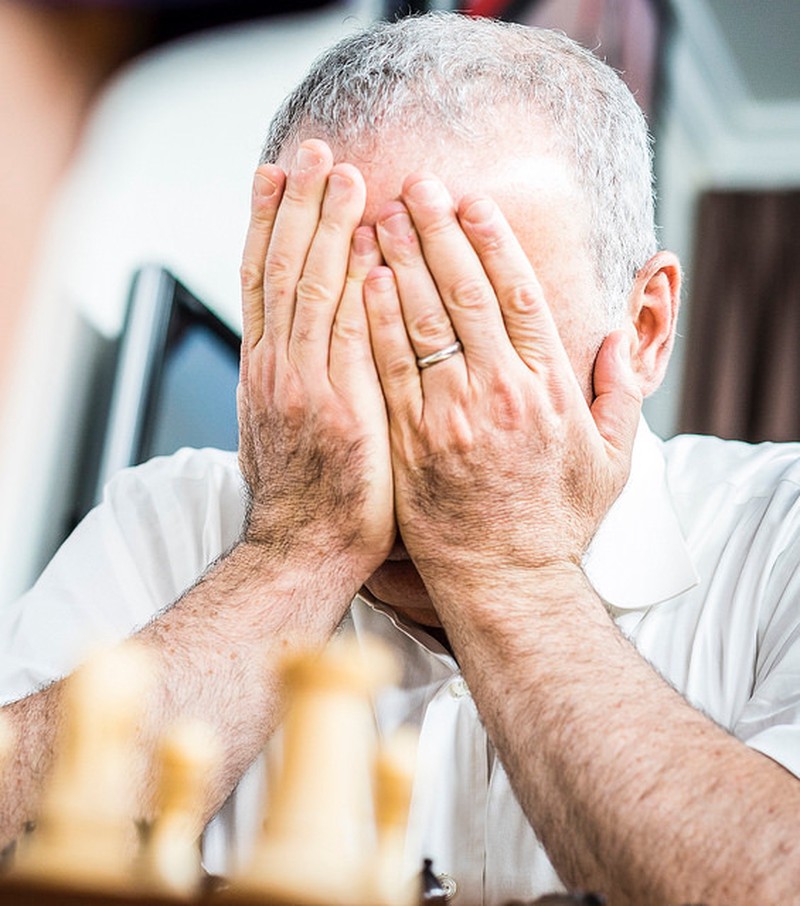
Kasparov seemed like he was in shell shock during game 8, and fell into deep time trouble against GM Le Quang Leim. It was the first game of the tournament where he had no business winning, but that doesn't matter much as his opponent simply hung a rook, instantly giving Kasparov his first win of the tournament.
And Kasparov closed the the rapid portion of the tournament with a loss with the blacks pieces to Fabiano Caruana. The game against Navara was extremely shocking and painful, and it seemed as if Kasparov had difficulty summoning robust moves for the last two games of the day.
Rapid Portion Tldr:
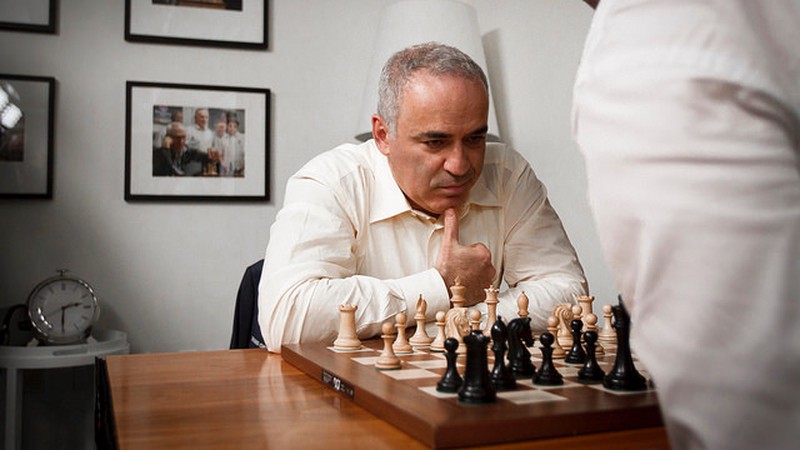
Kasparov obviously prepared for this event with sharp openings, fresh middlegame ideas, and willingness to grind out an endgame. This preparation was very successful in that it got him many winning chances.
But constant time troubles and blunders in key positions plagued Kasparov, netting him a one lucky win, 3 losses and 5 draws.
Levon Aronian is currently in the lead, and tomorrow we begin the blitz portion of the event!
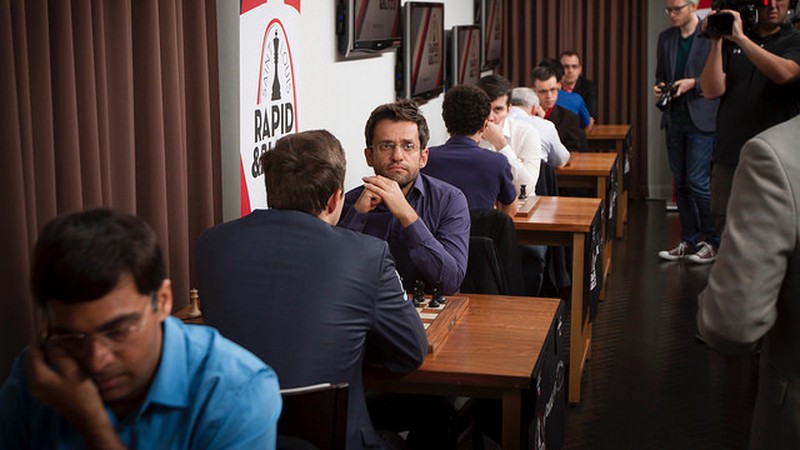
More blog posts by Lichess
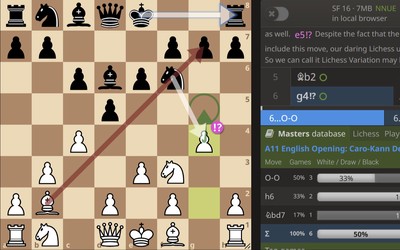
Lichess Game of the Month: March 24
Aggressive English/Reti system with 6.g4!?
Round 14: Gukesh and Zhongyi are officially the World Championship Challengers
A historic finish to the FIDE Candidates, as 17 year old Indian prodigy becomes the youngest World C…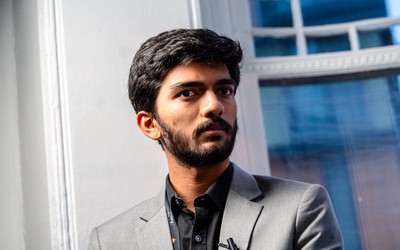
Candidates Round 13: Gukesh takes the lead, Zhongyi pulls ahead
A massive day for the 17 year old Indian, as his chances to win the Candidates skyrockets, as Zhongy…